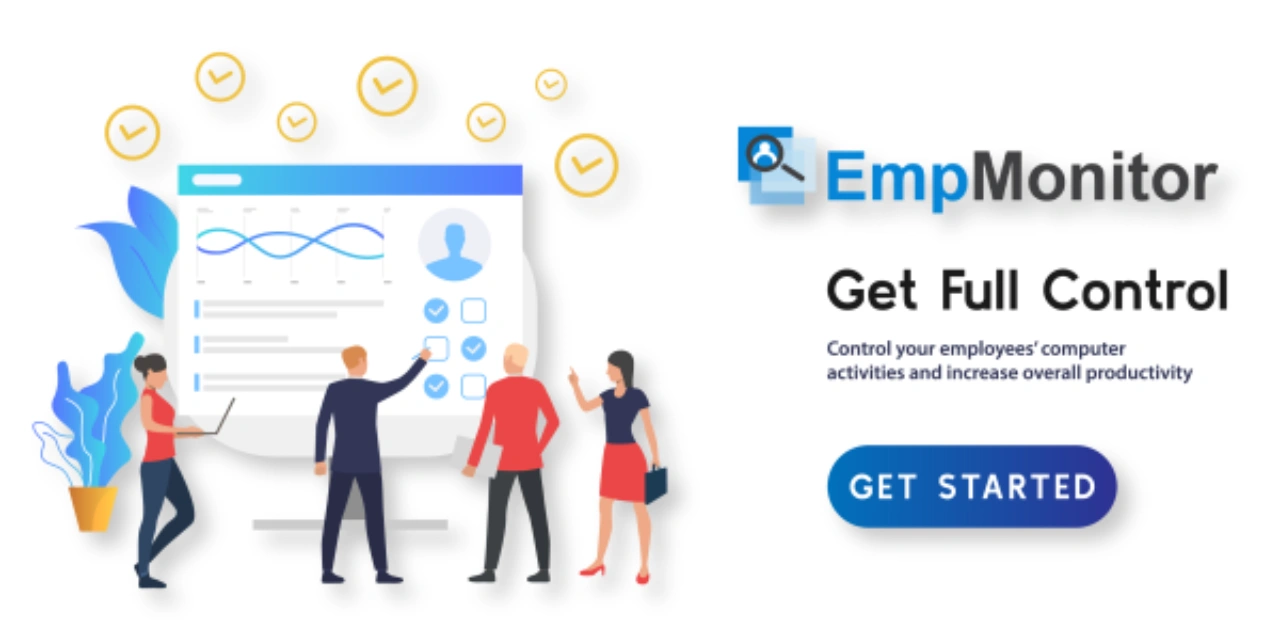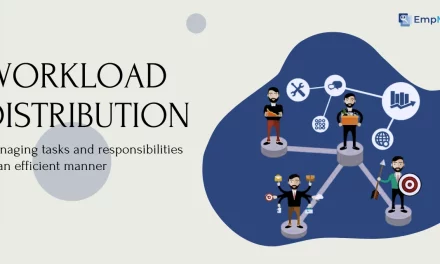Too many tasks and not enough time—that’s the daily grind for most teams. Piling up a long to-do list might feel productive, but it often leads to overwhelming and unfinished work. That’s where a simple shift in strategy can make all the difference.
The 1 3 5 rule offers a clear & focused approach to daily planning. Instead of juggling everything at once, this method helps you prioritize tasks by importance and effort. With the 1-3-5 to do list, you tackle 1 big task, 3 medium ones, and 5 small ones each day—no more, no less.
It’s not about doing more. It’s about doing what matters most—efficiently and without burnout. The 1 3 5 rule is especially effective for teams who want structure without the stress, and results without the chaos.
In this blog, you’ll learn how the rule works, why it boosts team productivity, and how to implement it with time-tracking tools. Stick around—your team’s workflow is about to get a whole lot smoother.
Listen To The Podcast Now!
What Do You Mean By 1 3 5 Rule And How It Works?
The 1 3 5 rule is a simple way to plan your day without feeling overwhelmed. It’s a method that helps you focus on what really matters—without wasting time or energy. Instead of filling your to-do list with a long list of random tasks, the 1 3 5 rule breaks it down into just nine tasks a day:
- 1 big task
- 3 medium tasks
- 5 small tasks
This makes a total of 9 tasks every day. Not too many, not too few—just enough to keep you moving forward without feeling lost.
Why This Rule Works
The 1-3-5 method works because not all tasks need the same attention. Some need time and energy. Others are quick wins. By choosing 1 important task, 3 medium ones, and 5 small ones, you stay focused and balanced.
This rule helps you avoid the trap of endless to-do lists that feel impossible to finish. Instead, it gives you a clear and doable daily plan.
The Psychology Behind It
Our brain loves checking things off. Every time you complete a task, your brain releases dopamine—a happy hormone.
- Big tasks give a big boost.
- Medium ones keep the flow going.
- Small tasks give quick wins and build momentum.
This mix keeps your mind motivated. You stay productive without burning out. The 1 3 5 rule fits naturally with how your brain works.
How It Compares to Other Methods?
There are many ways to manage tasks—like the Eisenhower Matrix, Pomodoro Technique, or Getting Things Done (GTD).
But the 1-3-5 method stands out because it’s simple. No need for complex tools or long setups. Just list 9 tasks each morning based on priority and size.
It’s flexible too. You can adjust your tasks based on your day, energy, or deadlines. Some days you’ll handle heavier tasks. Some days you’ll need more small wins.
Benefits of Following a 1-3-5 To-Do List for Enhancing Productivity
Many people start their day with a long list of tasks but end up completing just a few. That’s where the 1 3 5 rule steps in. It gives your day a structure that’s simple, clear, and highly effective.
Let’s break down the key benefits of using a 135 rule to plan your day.
1. Boosts Productivity
The most obvious benefit of the 1 3 5 rule is increased productivity. Instead of trying to do everything at once, you focus on 1 big task, 3 medium tasks, and 5 small tasks. This structure helps you get more done without burning out.
2. Makes Prioritizing Easy
When you use the 135 rule, you’re not just writing tasks down—you’re ranking them. You’re choosing what truly matters. This makes it easier to focus on the most important things first, instead of wasting time on low-priority work.
3. Build a Realistic To-Do List
Let’s be real—most to-do lists are too long. And when we don’t finish them, we feel like we’ve failed. The 1 3 5 rule helps create a more practical plan. You work on just 9 tasks a day, based on time and effort. It’s simple. It’s doable. And it works even when your day doesn’t go as planned.
4. Sharpens Your Focus
Not all tasks are equal. The 1 3 5 rule helps you avoid wasting energy on things that don’t move the needle. You give time to the big stuff and save quick slots for smaller tasks. This sharp focus helps you work smarter, not harder.
5. Builds Better Habits
Using the 135 rule daily builds a habit of mindful planning. You’ll start thinking differently about your time and how you use it. Over time, this small shift can lead to big results—at work and in life.
How To Implement The 1 3 5 Rule & Boost Team Productivity?
When the to-do list looks never-ending and everyone’s juggling too much, it’s time to simplify. That’s where the 1 3 5 rule comes in. This simple planning method helps individuals—and teams—stay focused, manage priorities, and boost daily productivity without burning out.
Let’s break down how to implement the 1-3-5 method to streamline your team’s workflow and get more done.
1. Start with a Brain Dump
Begin by listing every single task your team needs to handle—daily, weekly, or for a specific project. Get it all out. Whether it’s product updates, client follow-ups, or internal meetings, write it down.
Why it works:
A brain dump clears mental clutter. It lets the team see everything in one place. You’ll avoid last-minute surprises and give structure to scattered thoughts.
Tips to implement:
- Use a digital task manager or just pen and paper.
- Break big tasks into smaller chunks.
- Make separate lists for “This Week” and “Next Week.”
2. Categorize Tasks by Effort and Importance
Not all tasks are equal. Some need brainpower, others just need 5 minutes.
Here’s how to divide them:
- 1 Major Task: High priority, high effort. Moves your goals forward.
- 3 Medium Tasks: Important but less intense.
- 5 Small Tasks: Quick wins that still add value.
This is the core of the 1 3 5 rule—doing one big thing, three medium tasks, and five small ones a day.
Tips to implement:
- Trust your gut when sorting.
- If small tasks can be delegated, do it.
- Use past time logs to estimate how long tasks really take
3. Create a Team 1-3-5 List
Now it’s time to build your daily or weekly 1-3-5 method list.
Let each team member create their own list with:
- 1 Major Task: The big focus of their day.
- 3 Medium Tasks: Supportive tasks that move work forward.
- 5 Small Tasks: Quick duties that wrap things up.
When used across the team, the 1 3 5 rule brings clarity. Everyone knows what they should focus on.
Tips to implement:
- Use team boards (like Trello or ClickUp) to create 1-3-5 task sections.
- Encourage members to prepare their list the evening before.
- Keep lists visible for better collaboration and accountability.
4. Tackle the Biggest Task First
Morning energy is gold. That’s why the 1 3 5 rule works best when you tackle the big task first. Start with the major task before meetings or workplace distractions roll in.
Why it helps:
You use your best focus on what matters most. Even if the rest of the day goes sideways, your priority task is done.
Tips to implement:
- Block morning hours for major tasks.
- Avoid chats, emails, or calls first thing.
- Break large tasks into steps to avoid overwhelm.
5. Use the Pomodoro Method with the 1-3-5 Method
Pair the 1-3-5 method with the Pomodoro Technique for even better results. Work for 25 minutes, take a 5-minute break and repeat.
This makes it easier to complete big tasks in focused sprints without burning out.
Tips to implement:
- Use Pomodoro timer apps (like TomatoTimer or Focus Keeper).
- Track how many Pomodoros each task takes to plan better.
- Customize the time blocks to match your team’s flow.
6. Set Realistic Expectations
The 1 3 5 rule isn’t about cramming your schedule. It’s about doing the right things. Encourage your team to stick to the structure, not overfill the list.
Why it helps:
Overplanning leads to burnout and disappointment. The 1-3-5 layout keeps everyone focused on what’s doable.
Tips to implement:
- Don’t let meetings eat into deep work time.
- Make space for unexpected tasks or changes.
- Review lists daily to adjust priorities if needed.
7. Keep Reviewing and Improving
Success with the 1 3 5 rule comes from consistency and reflection. At the end of the day or week, check what worked and what didn’t.
Ask questions like:
- Was the major task completed?
- Were the small tasks necessary?
- Can anything be delegated next time?
This habit of review helps the team build a better system and stay on track long-term.
Now, speaking of staying on track, if you’re looking for a powerful tool to make sure your team’s time is being used efficiently, EmpMonitor might just be the game-changer you need. This time-tracking software helps teams keep tabs on productivity, monitor progress, and identify areas for improvement—all in real time.
Let’s take a detailed look at this mind-blowing software and see how it can elevate your team’s productivity to the next level!
EmpMonitor: The Workforce Management Software
EmpMonitor is a robust employee management software that enhances workforce productivity. Trusted by over 500,000 employees in more than 100 countries across various industries, it offers:
Web Data and App Usage
Keep your eyes on what websites your employees visit and identify any possible online time stealers. PInpoint blind spots and maintain enterprise-level management with a solid framework to shield the employees’ productivity from potential app distraction.
Automatic Timesheets
EmpMonitor provides an automatic timesheet that helps in avoiding manual time entry. It automatically starts tracking time once the user starts the computer and gives accurate activity insights.
Project Management:
- Customized Access Levels: Set specific access permissions for team members to control their access and responsibilities.
- Role Assignment: Clearly define and assign roles to individuals, ensuring tasks align with their skills.
- Member Groups: Organize team members into groups to facilitate better communication and collaboration.
- Timeline Monitoring: Keep track of project timelines, documenting task progress and deadlines.
- Task and Subtask Management: Manage tasks and subtasks with full CRUD capabilities for detailed tracking and control.
Shift Management:
- Real-Time Tracking: Monitor shift schedules and attendance in real-time to ensure optimal staffing.
- Efficient Scheduling: Easily handle shift changes and manage employee schedules for smooth operations.
Additional Features:
- Time Tracking: Accurately record work hours to manage billing and productivity.
- User Activity Monitoring: Track employee computer activity to assess performance and ensure security.
- Insider Threat Prevention: Implement strategies to detect and prevent potential internal threats.
EmpMonitor’s comprehensive features ensure effective workforce management and workforce optimization.
Conclusion
Incorporating the 1 3 5 rule into your team’s routine can transform productivity. This simple yet powerful approach helps you focus on what truly matters. By prioritizing tasks with the 1 3 5 method, your team can stay organized and focus on team efficiency. The key is consistency and reflection—always tweaking the process for better results.
To take your productivity to the next level, consider using EmpMonitor. This time-tracking software helps teams stay on track, monitor progress, and optimize performance. With EmpMonitor, managing tasks and maximizing productivity becomes effortless














